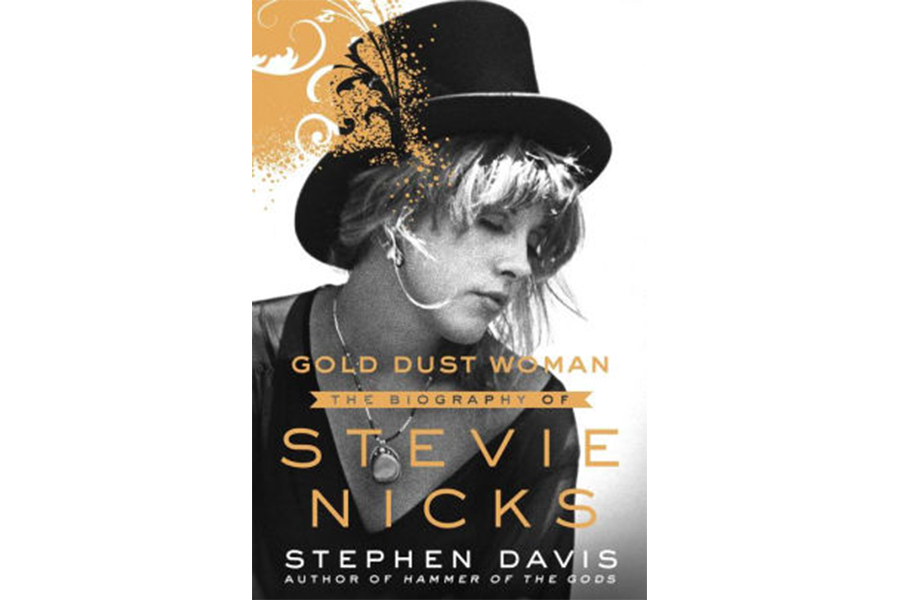'Gold Dust Woman' tells the story of rock icon Stevie Nicks
Loading...
Stevie Nicks was “the new girl in an old band” when she joined Fleetwood Mac in 1975. As Stephen Davis writes in a new Nicks biography, Gold Dust Woman, the singer-songwriter’s musical gifts were vastly underestimated.
Even casual fans probably know the outlines of the story, how Nicks and then-boyfriend Lindsey Buckingham signed on as “the latest, probably temporary, members” of the band’s fluid lineup. Buckingham was the original draw, but managers were told he and Nicks came as a pair. The result was a combustible mix of personalities and talents, fueled by romantic matchups and breakups, leading to the record-breaking album "Rumours" and global stardom. Nicks later added a solo career, becoming a rock icon with her strengths and shortcomings – a raspy voice, haunting lyrics, and mystically bohemian fashions. Now 69, Nicks still performs around the world.
Devoted followers won’t find major new stories in this unauthorized biography by Davis, a longtime rock journalist whose many books include co-authoring band co-founder Mick Fleetwood’s memoir. Relying on published interviews, transcripts, and Nicks’ own writing, it’s certainly an exhaustive account, and endlessly detailed.
We learn about Nicks’s Welsh ancestry and its connection to her landmark hit "Rhiannon." Davis covers concerts song by song, romantic breakups and reconnections (her loves included Joe Walsh, Don Henley, industry mogul Jimmy Iovine and a brief affair with Fleetwood), weight gain and weight loss, the “grating, squealing” voice with which she talks to her Yorkshire terrier (unnamed sources found the sound “less than enchanting”), epic drug abuse, and successful rehab. Her one marriage was short-lived and startling; stunned by grief after her best friend’s death, she married her friend’s husband with the intention of caring for the friend’s newborn son.
We hear some welcome insights, such as Nicks’s support of designer Margi Kent, who helped her develop her influential fashion style, making Nicks a chiffon-and-velvet vision of flowing skirts and scarves.
“She felt that Margi – and indeed all her entourage – were artists like herself who deserved the same kind of recognition that she was enjoying,” Davis wrote. And it’s remarkable to learn of Nicks’s lack of decision-making power in the early days of Fleetwood Mac, even as she contributed enormously to the band’s success.
Without Nicks’s cooperation, it makes sense that Davis can’t always delve beneath surface explanations of her actions. But it’s still jarring to see the occasional unexplored bomb thrown out, as when Nicks is picking up an old flame in a stretch limo and Davis adds parenthetically “(Some livery companies used by Fleetwood Mac in those days were reportedly instructed not to send black drivers for Stevie Nicks.)”
He then zips onward to describe the cinched-waist dress and “louche black beret” of her party outfit, around the last thing we’re wondering about right then.
In the preface and conclusion, Davis speaks of Nicks with exaggerated adulation, writing that “the appropriate response of her fans to this golden presence … is worship and love.” In other spots, his assessment is masculinely hostile, as when he inserts himself into the narrative at the time when he is researching Fleetwood’s book: “The writer … noted that she was tiny, overweight, and seemed a little bleary, as if she was medicated. Her eyes were red behind thick eyeglasses and she smelled of weapons-grade hairspray. She was stuffed into corseted stage clothes that displayed a bounteous silicone décolletage, and she wobbled uncomfortably in stacked-heeled boots, trailing scarves, and wore metallic hair jewels in her big coiffure. Even a bit overripe in her current state, there was still something deeply alluring in her presence.”
It’s clear that Davis respects Nicks’s musical talent, at least, and that he’s assembled a great deal of information. Still, after all the quotes, reports, facts and rumors, we’re left thinking Nicks has secrets and stories that remain untold.








